Real estate asset and investment firms deal with tons of incoming data every day just like us import data, in regard to their assets. That information must be collected, consolidated, and analyzed. Then, reports must be created and shared throughout the organization. It’s an arduous process. And without the right tools, it can also be error-prone frustrating and expensive. That’s why many of these companies are starting to look toward Portfolio Asset Management.
Now, you’ve probably heard of asset management and even portfolio management, but what is Portfolio Asset Management?
Portfolio Asset Management is usually mentioned when referring to a reporting and collaboration software solution for real estate investment firms and management professionals. Portfolio Asset Management software collects and reports property financials, budgets, and forecasts, leasing and other operating statistics, deal and leasing pipelines, capital budgets, loan details, documents, and more. Essentially it tracks and manages financial assets for real estate investors.
Moreover, portfolio asset management solutions are designed specifically for real estate investment firms and asset management professionals, with tools that support the relationships, reporting, and diverse technology unique to those firms. Georgia real estate firms offer consulting and financial structuring at any stage of development.
The best portfolio asset management solutions also work and play well with your property accounting system so that you can not only track your assets, but also take action based on that data, with real-time alerts and workflow management. It’s a tool that’s perfect for owners, investors, advisors, and asset managers wanting to make informed decisions based on real information that is real-time.

Another important aspect of a good portfolio asset management solution is security and user control. Because there can be so many moving parts in a typical real estate investment firm, each user should only see those properties to which he or she has been granted access. That way a secure environment is created for operating partners, investors, property managers, and brokers to share information that relates to their level of decision-making and expertise.
But how is it used?
The right portfolio asset management solution operates with three basic functions in mind.
- Collect – It should engages operating partners and property managers to easily import financials, statistics, rent rolls, documents, comments, and much more.
- Report – It should provide dashboards and drag-and-drop reports that can “slice-and-dice” the portfolio to show trends, key metrics and variances.
- Share – Everyone should see the same information at the same time. No saved reports or out-of-date spreadsheets.
For example, let’s say you’re an investment company with a mid-sized portfolio, you have about $2B in assets, and have property managers using multiple accounting systems. You’re already dealing with the logistical, technical, and accounting nightmares of using several different property accounting systems, and you’re likely to have multiple charts of accounts in several different file formats. That means any type of monthly or quarterly reporting you’re going to do is going to be time consuming and messy. The right portfolio asset management software solution should be able to make sense of it all, managing all of those different file formats, while maintaining chart-to-chart account mapping.
Ultimately, Portfolio Asset Management represents the best of browser-based software tools, providing sophisticated data warehousing and decision support features in a secure, collaborative environment. Learn more about it today.



Leave a Comment